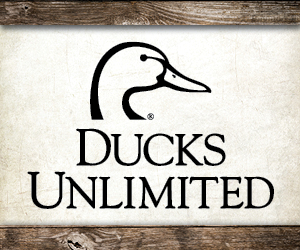
A touchdown pass from Mailon Kent to Tucker Frederickson won the 1963 Iron Bowl for Auburn. The gameday program was purchased for 50 cents.
Times were turbulent as No. 6 Alabama, just two years removed from the national championship, prepared to face once-defeated No. 9 Auburn at Birmingham’s Legion Field on November 30, 1963.
Just eight days earlier, United States President John Kennedy had been killed by a sniper’s bullet as he rode in an open limousine in Dallas, Tex.
A few months before that, not far from the stadium, four young girls had been killed by a coward’s bomb while attending Sunday morning services at the 16th Street Baptist Church.
That was the setting for college football around the country that weekend. Tickets to the Legion Field game, not yet known as the Iron Bowl, went for $5.00 each … $4.85, plus 15-cents tax, to be exact.
The program that I bought outside Legion Field that day featured a tiger and an elephant, drawn in the unique style that could only be done by legendary Birmingham Post-Herald cartoonist Phil Neel. It cost me 50 cents.
Inside the stadium, the crowd, estimated at over 54,000, got much more than its money’s worth. Auburn took the lead in the first quarter on a 32-yard field goal by Woody Woodall. The lead was extended to 10-0 on an eight-yard third-quarter touchdown pass from Mailon Kent to Tucker Frederickson. Alabama’s only points came later in the quarter when Benny Nelson sprinted 80 yards to score. The fourth quarter was scoreless and the Tigers took the win, 10-8.
I missed the 1962 game, watching it instead with a close friend. That was the last Alabama-Auburn game that I didn’t attend, in the stands, in the pressbox or on the sideline. Beginning in 1963, that’s 50 in a row.
Not many saw that 10-8 game since it wasn’t televised, but that changed the next season, the first time the match-up was broadcast nationwide. Joe Namath led the Crimson Tide to a 21-14 victory, secured when Frederickson was stopped on fourth down near the goal line. Alabama won the national championship.
Not many will remember that the following year, the winner of the Alabama-Auburn game would capture the Southeastern Conference title. Both teams entered the game undefeated in league play, but each had a tie. Alabama dominated, 30-3, and was named national champion for the second consecutive season.
Over the past five decades, there have been memorable games.
1967 – Thunderstorms with high winds soaked Legion Field from start to finish. Late in the game, Bama quarterback Ken Stabler slogged 47 yards for the only score in a 7-3 win. Umbrellas were allowed in the stadium in those days, but mine didn’t last four quarters. When the wind blew it inside out, we just stomped it flat in the stands. It’s easily the wettest that I’ve ever been at a football game.
1972 – In the most unlikely outcome in the series, No. 9 Auburn defeated No. 2 Alabama, 17-16. The Tigers gained under 100 yards, but won through the kicking game. Bill Newton blocked two Crimson Tide punts, David Langner caught both on the dead run and scored touchdowns. “Punt, Bama, Punt” is still the most well-recognized phrase in the game’s history.
1981 – Alabama coach Paul “Bear” Bryant, nearing the end of his legendary career, guided the team to a 28-17 win, his record-setting 315th coaching victory.
1982 – The drama went the other way the next season as freshman Vincent “Bo” Jackson capped a late length-of-the-field drive with a leap over the Bama defense in a 23-22 win. The “Bo Over The Top” game was Bryant’s last one against Auburn.
1985 – The game is known for “The Kick.” The lead changed hands four times in the fourth quarter and Bama placekicker Van Tiffin hit a 52-yard field goal as time expired for the 25-23 win.
1989 – This game changed the series more than any other. Both teams were nationally ranked when the Crimson Tide played in Auburn for the first time. The Tigers defeated No. 2 Alabama, 30-20, in the game still considered the most electric ever between the teams.
2009 – This one is known for “The Drive.” Auburn led No. 2 Alabama for most of the game, but quarterback Greg McElroy led a 79-yard march, ending with his touchdown pass to Roy Upchurch with little time remaining. The Crimson Tide won the national championship a few weeks later.
2010 – The next year it was “The Comeback.” This time it was Auburn that entered that game at No. 2, but Alabama led most of the way. A late touchdown pass from quarterback Cam Newton to Philip Lutzenkirchen provided the 28-27 margin. The Tigers won the national championship a few weeks later.
That list doesn’t include all of the classic moments. Alabama won when Jackson went the wrong way (1985) and when Thomas Gossom was pushed out of bounds before making an apparent touchdown catch (1974). Auburn won when Alabama inexplicably called – and fumbled – a late fourth quarter pass (1997) and when quarterback Brodie Croyle was sacked 11 times (2005).
The game wasn’t always known as the Iron Bowl. Stories differ regarding how the name originated, but according to one internet source, “By 1980, the series had come to be called the Iron Bowl, due to Birmingham’s prominence as a center of iron and steel production. The term Iron Bowl was coined by Auburn’s coach at the time, ‘Shug’ Jordan. Alabama’s coach, ‘Bear’ Bryant, said he preferred calling the game the Brag Bowl, since the winner’s fans got to brag all year long.”
Regardless of what the game is called or how the name started, one thing is certain. Over the past 50 years, the Alabama-Auburn game has become the most heated, competitive and famous rivalry in college football. And, for the most part, people in the state of Alabama, and fans of the two schools everywhere, don’t realize what they have. Many times … if not most times … fans spend so much time criticizing each other that they don’t appreciate how blessed they are. State football fans are spoiled.
From 1963-2012, Alabama ranks sixth among all major college teams in winning percentage and Auburn ranks in the top 15. Florida is the only other state with two teams ranked that highly. Only 38 wins separate Alabama and Auburn over the five decades combined, an average difference of less than one game per season.
Sixteen times in that span both teams have been ranked in the Top 25 entering the game. In those years, Auburn has won 11 times and Alabama has won five.
In six of those seasons, both teams have been ranked in the Top 10 when they played. Each team has won three of those meetings.
The teams have combined for four Heisman winners and several other winners of major postseason awards. In those 60 seasons, either Alabama or Auburn has won 23 SEC championships (37 percent). Since the conference split into divisions 21 years ago, the teams have won a combined 15 division titles (71 per cent).
The game has been played in three stadiums since 1963 – Legion Field, Jordan-Hare and Bryant-Denny. In these past five decades, Alabama leads in games played in Birmingham, 23-9. In games not played in Legion Field, Auburn leads 12-6 … 7-4 in games in Auburn and 5-2 in games in Tuscaloosa. The won/loss margin of the all-time series was achieved during the unparalleled success for the Crimson Tide in the mid- and late 1970s.
Fifty years has brought the Iron Bowl rivalry full circle for me. Heading into Saturday’s game, both teams are nationally ranked again with a lot on the line, just like it was in 1963, but the teams and the stakes are higher this time – as high as ever in series history. The SEC championship, the national championship, and maybe most importantly the state championship are all still in play for both teams.
Before the game against Western Carolina in October, Auburn honored that 1963 team, the squad that defeated Tennessee, Florida, Georgia and Alabama and finished No. 5 in the season’s final poll. Before the game, I met Kent and Frederickson in the Plainsman Park parking lot outside the south end of Jordan-Hare.
They signed the front cover of my 1963 gameday program, still in mint condition after all these decades.
That program will always be one of my most treasured possessions.
It only cost 50 cents. But, it represents 50 years of priceless memories.


